
The term power endurance is one that is surrounded by quite a bit of confusion as the climbing industry (keen climbers, coaches and training books) use a mixture of words for the same thing. At Lattice we use "aerobic power" but in the more classical textbook literature you often see "strength endurance" and interestingly the Internet is most populated by the word "power endurance." In general, it's best to see these terms as synonymous with each other and not get bogged down in minute differences and the semantics.
In the most basic sense, your power endurance is the ability for the muscle to exert sub-maximal contraction for an extended period of time. You can also think of it as form of strength that requires muscle contraction over a relatively long duration of time with a limited reduction in efficiency. If you get into reading around the subject matter you'll find articles on strength endurance, aerobic endurance, aerobic power, speed endurance and anaerobic capacity. It's a big subject area!
Going back to what really matters for you as a climber though, it's important to understand just a couple of things:
1. It's your ability to sustain sub-maximal effort at as high as possible intensity for the duration of your goal
2. Your power endurance will be a function of your strength levels and the ability to efficiently maintain them through intermittent muscle contraction
In the Crimpd app we've broken down power endurance into two sections – aerobic power and anaerobic capacity.
Aerobic power: can be thought of as mid-to-high intensity training with moderate duration/volume of climbing. It's the type of climbing that gets you pretty pumped and you're likely to be feeling like you're on a very hard redpoint or onsight!
Anaerobic capacity: is a much higher intensity form of training that results in the feeling of becoming very "powered out" during the session. Importantly, you won't become so pumped with this type of exercise as the duration is much shorter.
Why do them?
Your aim is to train your forearm muscles to sustain mid-to-high intensity contraction for increasingly long durations. Of course, we should acknowledge that there's a level of specificity here and that if your goal is a 4 minute, intense five-bolt route, then the training doesn't need to be huge long sets of twenty minutes of pumpy climbing!
In addition to the training effect of increasing the "sustainability" of the contraction, we also want to increase the "capacity" of the muscle to operate anaerobically. Think of it as two parts to the equation in some senses. You want to produce lots of energy anaerobically (it'll be used on very hard moves), but you'll also want to sustain that ability for a certain duration.

How to train aerobic power
Let's take an example workout from the app, which is Capacity Power. This session is one that sets the climber the task of climbing sets that consist of double laps on the wall or circuit board. The intensity is set at 1-2 grades under your onsight.
5 sets of 2 reps.
Each rep is a double lap of a route
Rest between each rep is 1 minute
Rest between each set is 10 minutes
Grade is 2 grades below onsight
Focus points
The grade must be pretty close to your onsight to make gains in this area. It's an uncomfortable form of training, will push you to your limit and you're very likely to be failing on a number of sets.
Pump level is high from early on in the session.
For this session, it's great to remind yourself that it's also partially mental training as you're likely to be falling off and also pushing your physical limits to uncomfortable levels.

How to train anaerobic capacity
The focus of anaerobic capacity workouts is to stress the anaerobic system and improve the output from it. This training must be at a high intensity and should never include too much volume so that session quality is lowered.
An example of this would be a session found in the app called "Boulder Triples" which can be performed on a bouldering wall, whether it's a normal section of the climbing gym or a system board.
6 sets of 3 reps.
Each set is 1 boulder problem repeated three times
Rest between each rep is 1 minute
Rest between each set is 3 minutes
Grade is around your flash level or feeling like 75% of your total maximum
Focus points
The grade must be a hard bouldering grade for you. It shouldn't be possible for you to sustain this intensity for more than 30-45 seconds.
You must aim to feel "powered out" by the end of the session. It's that feeling of not being able to climb hard any more, no matter how much rest you take.
The terrain you climb on should typically be steep and powerful. Don't try this on slabs!
Structure for boulderers vs route climbers
These two forms of training are beneficial to both boulderers and route climbers, but aerobic power and anaerobic capacity should be separated depending on your discipline.
Route climbers should focus on aerobic power training as a method for getting into peak physical shape for a goal and in contrast the boulderers should mainly focus on anaerobic capacity for physical stimulus.
As a very rough guide, we would expect both boulderers and route climbers to do only 2 sessions of their respective form of power endurance training per week and anyone considering more should speak to a coach or a trusted individual. This training is easy to overdo!
Summary
Power endurance training is a form of aerobic and anaerobic training that is mid-to-high intensity and typically lower in volume compared to endurance training.
It is a training protocol that brings about peak physical form in route climbers and improves the efficiency of energy production in boulderers.
Your training should take into account your specialisation, whether it is bouldering or route climbing. Importantly, boulderers should do more anaerobic capacity training and route climbers should focus on aerobic power.















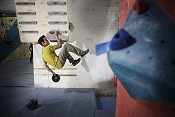
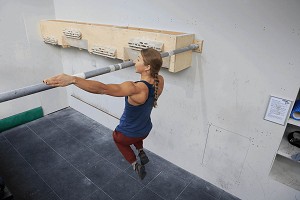
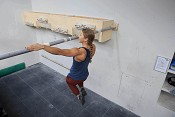

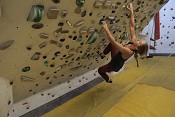

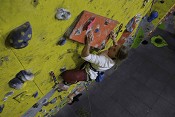
Comments
Thanks for the article. What would you advise to be the best way to track Anaerobic Capacity as a boulderer?
My main concern being how to subtract out any gain in finger strength from the equation as that would skew the results to make it look like my AnCap is improving when it's only the knock on effect of improved finger strength.
Any advice would be greatly appreciated,
Justin
I seem to remember comments from several people saying that power endurance is the least trainable. Is that correct, what would the best way to incorporate it into a training schedule, and generally how long would you normally train it for?
Cheers
Hey Tom,
Here's my current predicament...
My strength tends to come and go in fairly significant peaks and troughs. This is accentuated by the fact I tend to do a lot of trad/sport over the spring/summer (thus I get fit and weak) followed by bouldering throughout the autumn/winter (where I get strong and (in theory) powerful).
Clearly there’s a somewhat painful transition phase and my question is based around that: what am I best doing to recruit back the strength I’ve lost? I'm conscious that there's no cutting corners, but have always been amazed how fast you can 'get it back', but I've never actually seen any precise figures regarding the timelines.
Cheers!
Hi Tom,
Two related questions: 1) How quickly does power endurance fade once you stop training it?
2) What's the minimum effort required to maintain power endurance? Would 1 session per week be enough & does redpoint / onsighting at your grade limit count towards this (e.g. climbing outdoors at the weekend)?
Thanks,
Phil
Hi Tom - looks like a busy night so I'm going to get in the queue!
Another question about fitting AnCap into a plan. Whenever I train AnCap I find that my forearms are too tired for any more strength training for at least two days (as in it sometimes takes two rest days to recover). Is this because am bad at it; unaccustomed to it; or to be expected?
Also, in Barrows' PDF he tentatively suggests that AnCap can adapt for about 16 weeks before plateauing (with caveats that this is a guesstimate). Given your experience, would you plan 16 weeks of AnCap for a generally weak-but-fit trad/sport climber who would like to be less shit?
Really enjoyed reading the questions and answers from last week. Cheers for doing this yo